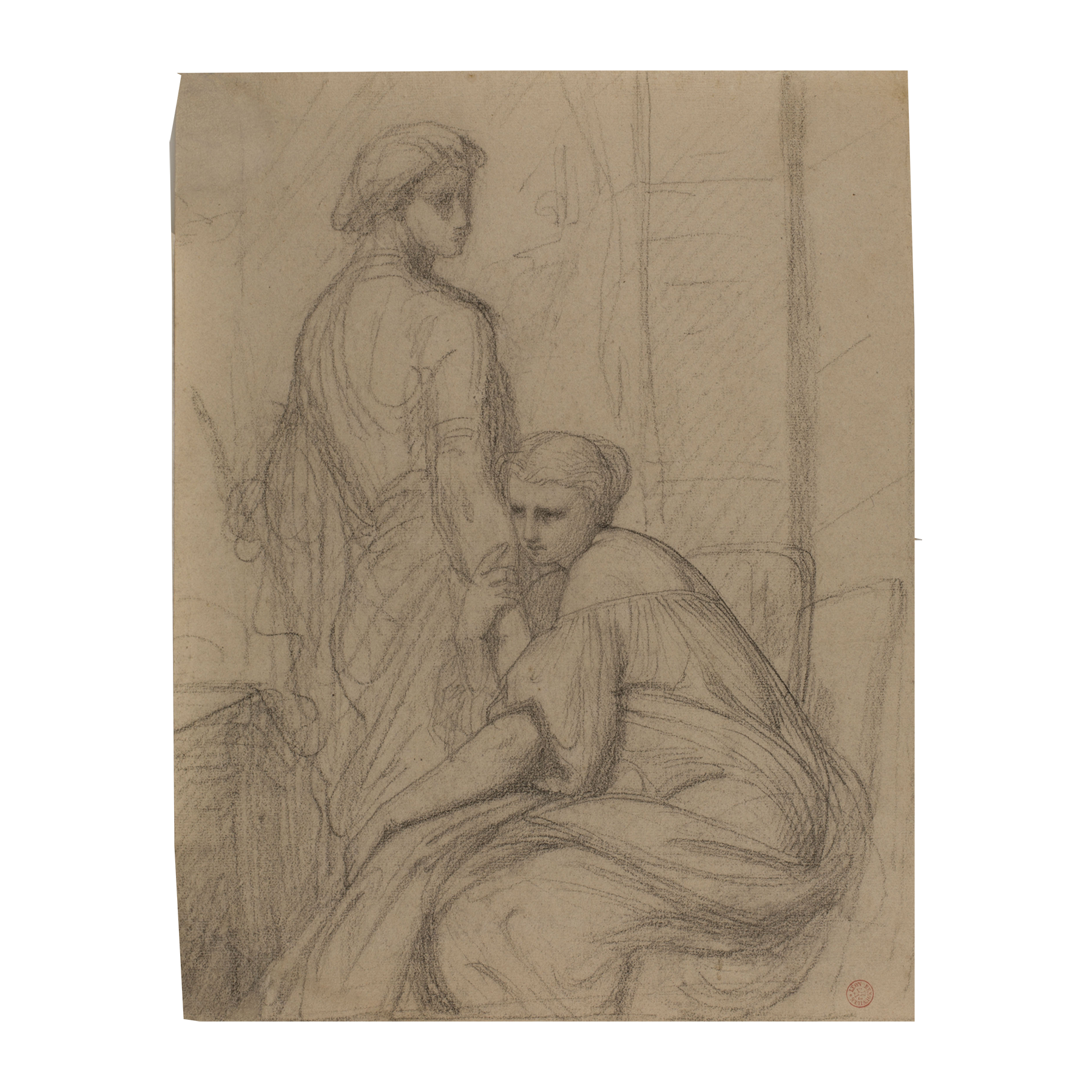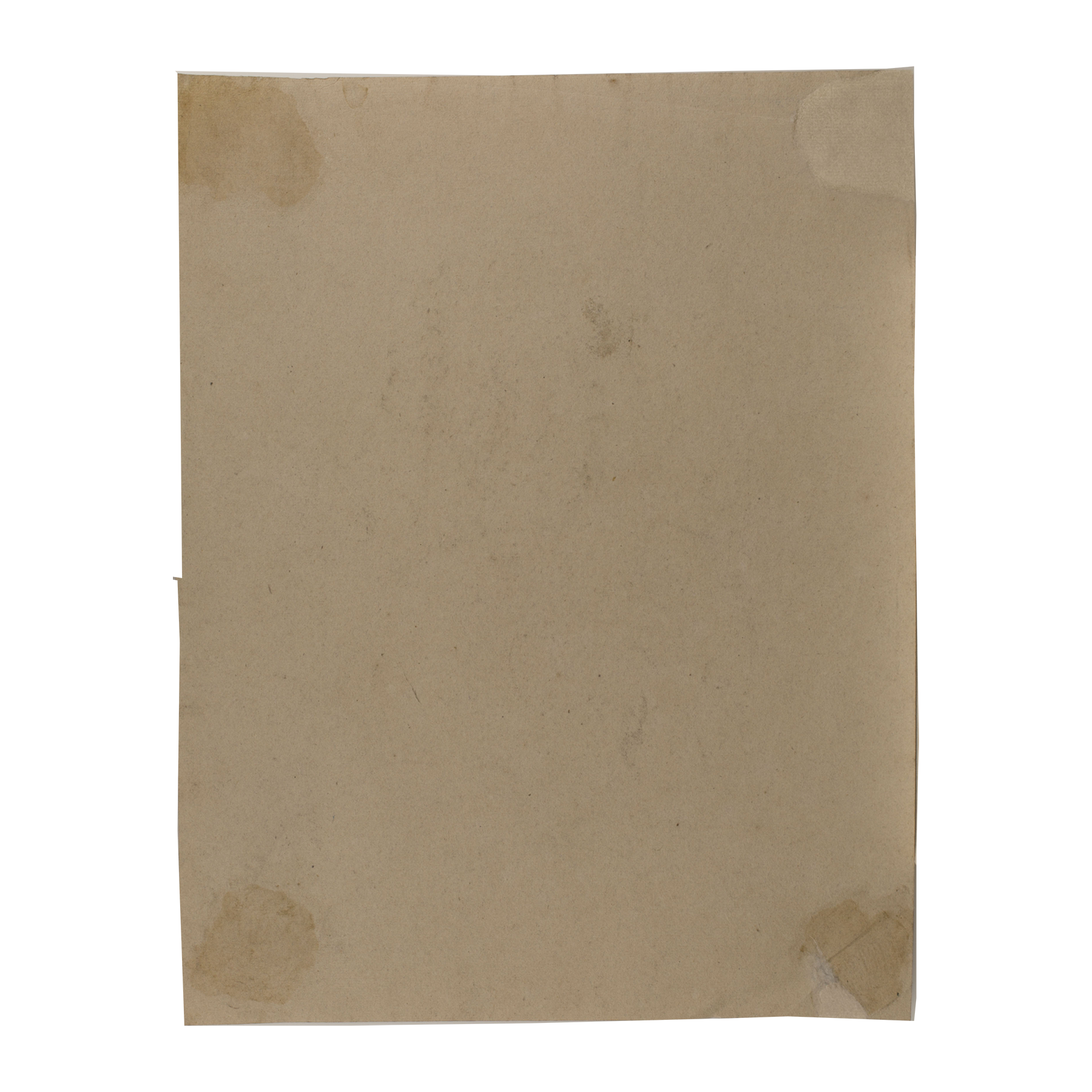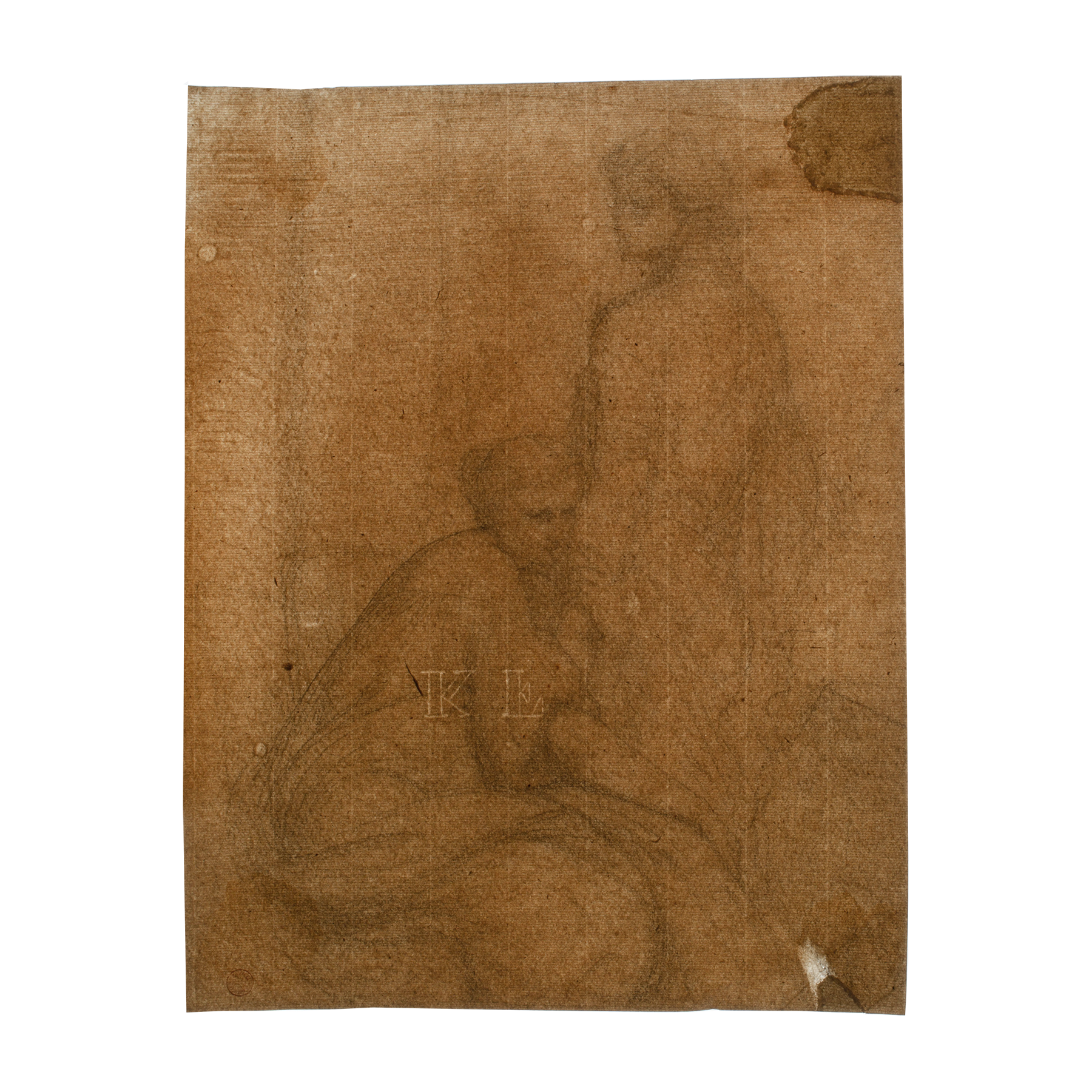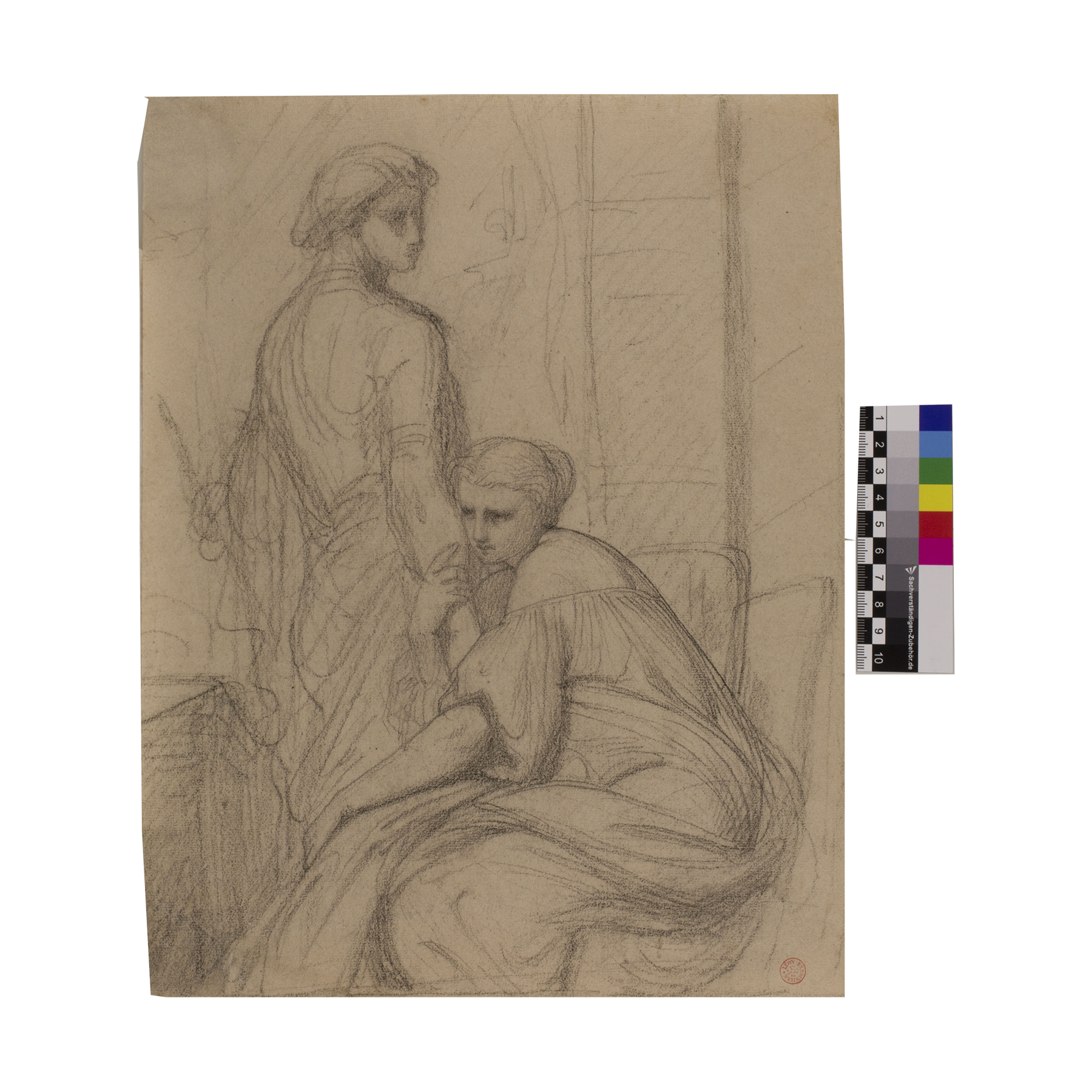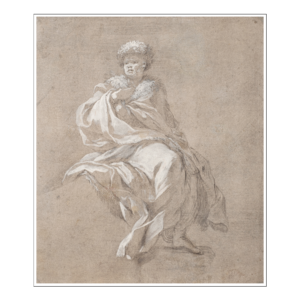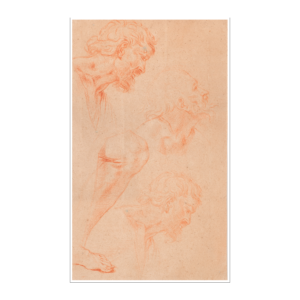François Léon Benouville, known as Léon Benouville
Paris, 1821–1859
Study for The Spinner at the Spinning Wheel
black chalk on brown paper.
350 x 270 mm – 13 3/4 x 10 5/8 in.
Watermark: K F.
Artist’s stamp François Léon Benouville (L. 228c) affixed lower right.
Born in Paris in 1821, François Léon Benouville began his apprenticeship in François Édouard Picot’s studio at the École des Beaux-Arts in 1837. The younger brother of landscape painter Achille Benouville, he made his debut at the 1838 Salon. After winning the Grand Prix de Rome for painting in 1845, Léon left for the Villa Medici with his brother, who had won the Grand Prix for historical landscape painting the same year. In Italy, Léon devoted himself to history painting, developing a predilection for religious subjects. On his return to France, he gained public recognition with Saint Francis of Assisi, Transported Dying to Santa Maria degli Angeli, Blessing the City of Assisi, exhibited at the 1853 Salon and purchased for the Musée du Luxembourg (now in the Musée d’Orsay, Paris). He died prematurely at the age of 38 from typhoid fever.
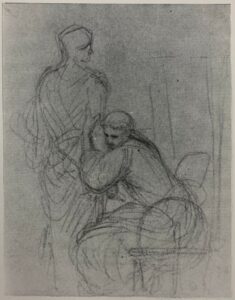
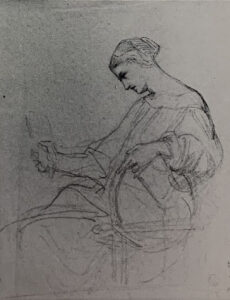
Our drawing should be considered in relation to two other black chalk studies: A Scene with a Spinner at the Spinning Wheel (1) (fig. 1) from the Pierrey-Laforest collection in Paris and A Study of a Spinner (2) (fig. 2) from the Musée des Beaux-Arts in Rouen. Léon Benouville undoubtedly conceived these studies with the aim of creating a painting, the subject and location of which we have not yet been able to identify.
Condition report – Very good condition. Traces of glue on the four corners of the reverse side of the sheet.
(1) Black chalk; 352 x 292 mm; Pierrey-Laforest collection, Paris. See Marie-Madeleine Aubrun, Léon Benouville (1821–1859). Catalogue raisonné of works, Nantes, 1981, p. 305, D. 511.
(2) Black chalk on buff paper; 268 x 239 mm; Musée des Beaux-Arts, Rouen, Inv. 897.6.92 B. Cf. Marie-Madeleine Aubrun, op. cit., p. 305, D. 512.

